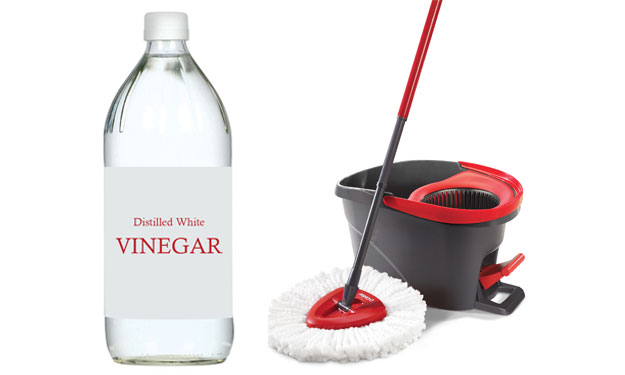Clean With Vinegar

How to Clean With Vinegar
Want the ultimate natural cleaning experience? Turn up your nose and take another sniff of common, household vinegar!
For a “green” environmentally friendly product, you can’t get anything better than vinegar. It might not look green though.
Most vinegar is white, yellowish, shades of amber, red and almost black. For cleaning purposes though, we use white vinegar.
Where Does Vinegar Come From?
Vinegar may be derived from several sources – most common are fruits and grains, such as apples, fermented grains and rice, but it is even made from wood and roots.
You’re probably familiar with vinegars made from fruit juice. The juice contains sugar that ferments into alcohol, changing the juice into wine.
What a surprise to the cook who stores a bottle of wine under the kitchen counter then opens it to find the sweet wine has turned to vinegar! That’s the natural process it takes – given the right conditions, the alcohol in the wine changes to vinegar – hence, the name, “wine vinegar”.
Vinegar is a Germ Fighter!
The germ fighting properties of vinegar are legendary. In fact, the Father of Medicine, Hippocrates, is said to have treated his patients with vinegar for all kinds of ailments – in 400 B.C.!
My Vermont-born great-grandmother relied on a drink made from vinegar, honey and warm water to begin her day. Whether it contributed to her longevity or not, I don’t know (she lived to a ripe old age of 90!) but it certainly awakened her taste buds and sharpened her tongue!
Vinegar is a disinfectant, deodorizer and it cuts through grease. You can tackle many different kinds of bacteria and the kind you buy in the store can kill around 80 percent of germs on counters, showers, sinks, toilets, fixtures, etc.
Vinegar is acidic, never use on marble or natural stone surfaces as it can permanently etch and damage the surface.
Vinegar is a Natural Cleaning Product!
White vinegar is great for household cleaning. It is very versatile and, while it does leave an odor, it quickly dissipates. There are a lot of advantages in using vinegar as a household cleaner.
- It’s non-toxic to humans and pets. However, it is a mild acid, and should not be used on items that could be damaged such as crystal and some stones.
- If your glassware (not crystal) has a soapy film that leaves them cloudy, try soaking it in a solution of a half cup vinegar to a gallon of water. Let it sit for a half hour, then remove, wash and rinse well.
- You can deodorize your toilet bowl by pouring two cups undiluted white vinegar into the bowl. Allow to sit for 15 minutes, then scrub and flush.
- Vinegar will also remove greasy drops from your stove and refrigerator. Simply moisten a paper town or household sponge with vinegar from the bottle, and wipe. Works on chrome and stainless steel, as well.
- Cleaning ceramic, tile, linoleum, hardwood, and no wax floors is easy with white vinegar. Add one tablespoon vinegar to a gallon of warm water. Damp mop and dry.
Vinegar is acidic, never use on marble or natural stone surfaces as it can permanently etch and damage the surface.
Cleaning the Shower with Vinegar
We recommend that you “shower your shower” with vinegar – provided your shower is constructed of porcelain tile, glass, fiberglass or other man-made materials.
You can keep your shower stall clean and shining just by exercising a few simple techniques and perhaps a change in bath soap!
Natural “castile” soaps, such as coconut castile, are made from vegetable oils rather than waxes. Natural oils are easier to dissolve and rinse away. A natural astringent, vinegar is non-abrasive and cuts through greasy soap scum build-up with a little scrubbing.
Use Vinegar to Clean the Coffee Pot
Freshen your coffee pot and remove coffee stains from the glass pot by filling the water container with vinegar and running it through a cycle.
When finished running a vinegar cycle, wash the coffee pot and run two or three cycles through the coffee machine using fresh clean water. You don’t want your coffee tasting like vinegar the next time you make it.
Cleaning and Sanitizing the Bathroom
You can use vinegar full strength on bathroom counters and fixtures. It actually shines chrome and cuts through soap scum.
If there are water spots on the sink and fixtures, dampen a paper towel with vinegar and allow to sit on the affected area for about 10 minutes. Then go back, wipe clean and dry.
This will work if the water spots have not already etched into the porcelain. At any rate, it will improve the appearance and sanitize the fixtures.
Use vinegar full strength on a soft clean cloth to clean the outside of the toilet. Add full strength to the water in the toilet bowl.
More Ways to Use Vinegar
Below are a couple of references to other ways you can use vinegar to clean around the house.

